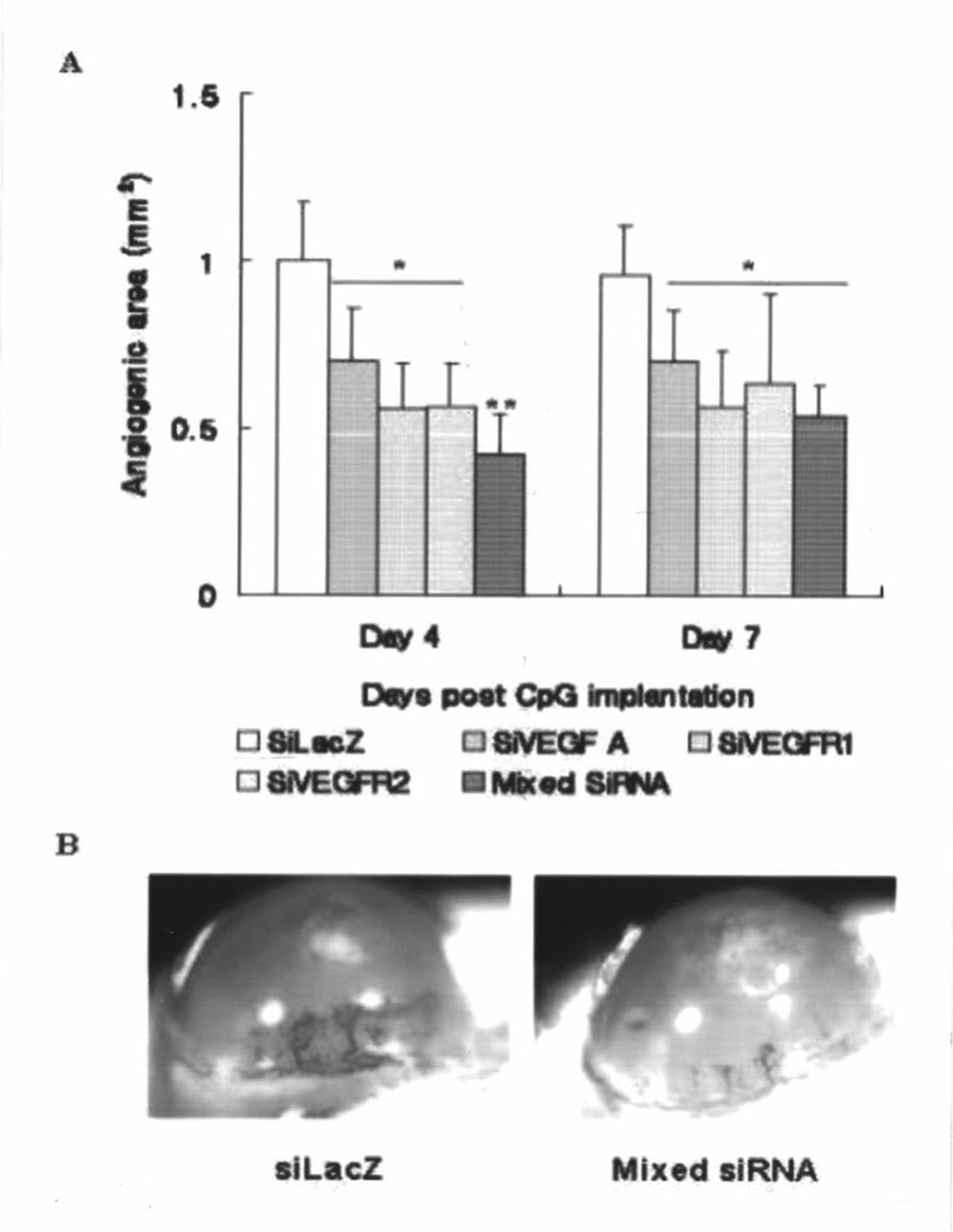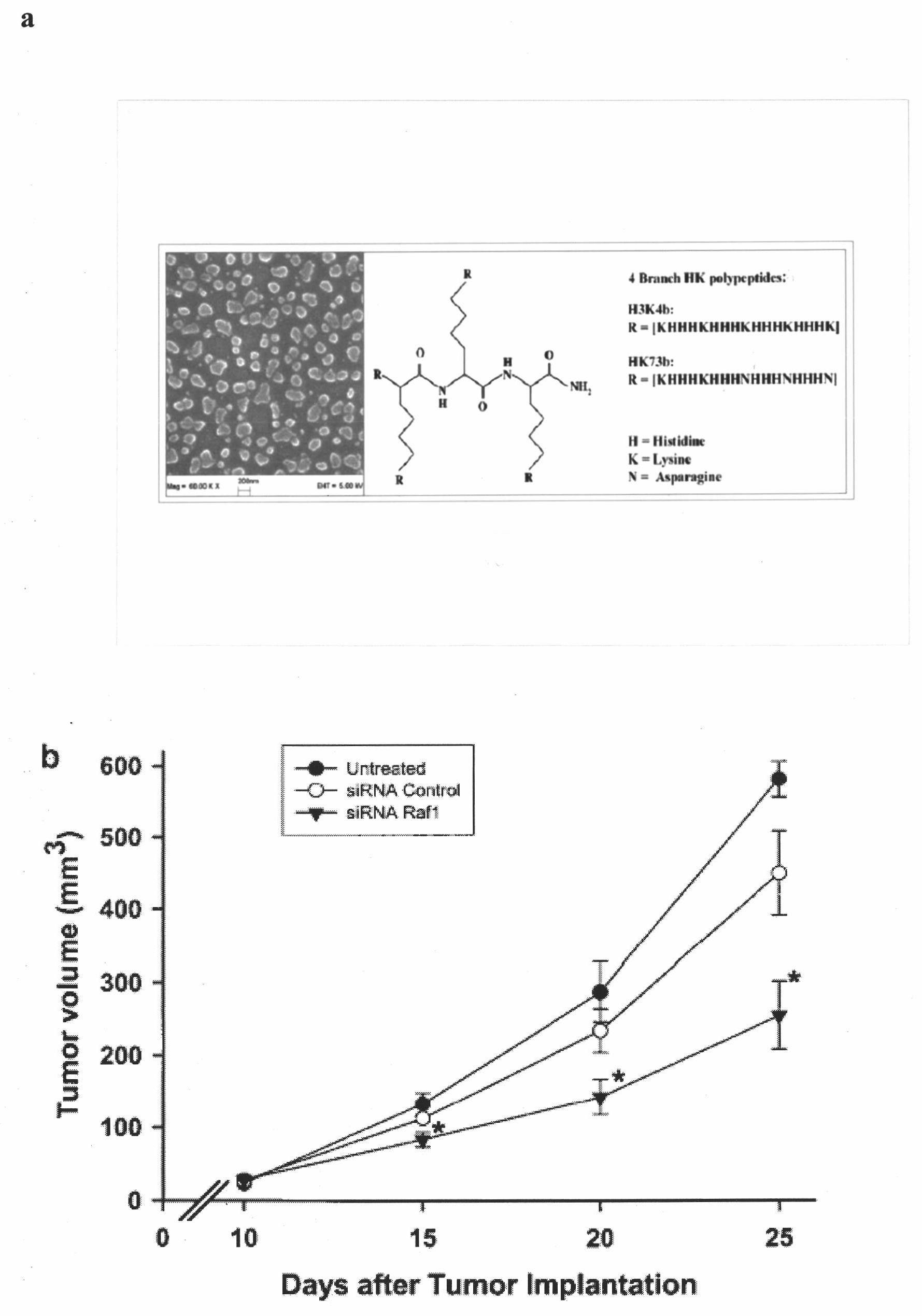Short interfering ribonucleic acid (siRNA) for promoting scarless healing of skin wounds and application thereof
A technology of skin and composition, applied in the field of siRNA and its application to promote the healing of skin wounds without scars, which can solve the problems of impossible guarantee
- Summary
- Abstract
- Description
- Claims
- Application Information
AI Technical Summary
Problems solved by technology
Method used
Image
Examples
Embodiment 1
[0077] Example 1. Taking the mouse eyeball neovascularization model research process as an example, it shows how to screen for inhibitory Active siRNA to form a multi-target siRNA cocktail process
[0078] Neovascularization in tissues is involved in many pathological processes, such as tumor expansion, rheumatoid arthritis, fundus macular degeneration, and granuloma and scar formation in skin trauma, etc. Therefore, we used siRNA drugs to inhibit neovascularization as a model system for siRNA therapy. The specific process is shown in this example: 1. Target gene selection, 2. siRNA design in computer, 3. In vivo and in vitro tests.
[0079] 1. Target gene selection.
[0080] Many genes are involved in the regulation of neovascularization, such as vascular endothelial growth factor (VEGF) and its receptor (VEGFR). According to the literature tracking and the survey of the same class of drugs in the current market, the target genes we selected include: mVEGF-A (XM_192823)...
Embodiment 2
[0113] Example 2.HKP polymer can enhance the local introduction of siRNA
[0114] Chemically synthesized histidine-lysine polymer (HKP) has been used for siRNA delivery in vitro and in vivo. Figure 3a The figure on the right shows the structural sequence of HKP: four polyamino acid branch chains are attached to the trimeric lysine backbone. Polyamino acid branches are repeated in fixed arrangement and length by histidine, lysine or asparagine. The two types of HKPs used in the study are H3K4b and PT73 with the structure (R)K(R)-K(R)-(R)K(X), where R=KHHHKHHHKHHHKHHHK in H3K4b and R=KHHHKHHHNHHHNHHHN in PT73, X=C(O)NH2, K=lysine, H=histidine, N=asparagine. Figure 3a The image on the left is a scanning electron microscope image. When the HKP aqueous solution and siRNA are mixed at a mass ratio of 4:1, nanoparticles with an average diameter of 100-200 nm are automatically formed. The HKP-siRNA aqueous solution is translucent, without obvious precipitation and aggregation,...
Embodiment 3
[0118] Example 3. HoxB13 KO mice show rapid wound healing and less scarring
[0119] HoxB13 KO mice (gifted by Dr.Mario R.Capecchi) are an effective platform to verify the function of HoxB13 gene. In order to track the dynamic changes of tissue structure in the repair process of skin tissue after injury, we established a lip surgical split model in HoxB13 KO mice to simulate cleft palate of rabbit lip. Normal lip skin was stained by hematoxylin-eosin (HE) as Figure 4 shown. Under general anesthesia and aseptic conditions, a single 0.5 cm full-thickness skin incision wound was made on the skin and front teeth of HoxB13KO and wild-type mice (8-16 weeks old), and then the wound was sutured with 6.0 nylon, This simulates a cleft palate of a rabbit lip. Skin wound biopsies were taken at 20, 30, and 60 days after injury, and the collagen structure was analyzed by Masson Trichrome staining, as Figure 5 . On the 20th day (B-Day20) and the 30th day (B-Day30), WT mice had dense...
PUM
 Login to View More
Login to View More Abstract
Description
Claims
Application Information
 Login to View More
Login to View More - R&D
- Intellectual Property
- Life Sciences
- Materials
- Tech Scout
- Unparalleled Data Quality
- Higher Quality Content
- 60% Fewer Hallucinations
Browse by: Latest US Patents, China's latest patents, Technical Efficacy Thesaurus, Application Domain, Technology Topic, Popular Technical Reports.
© 2025 PatSnap. All rights reserved.Legal|Privacy policy|Modern Slavery Act Transparency Statement|Sitemap|About US| Contact US: help@patsnap.com



